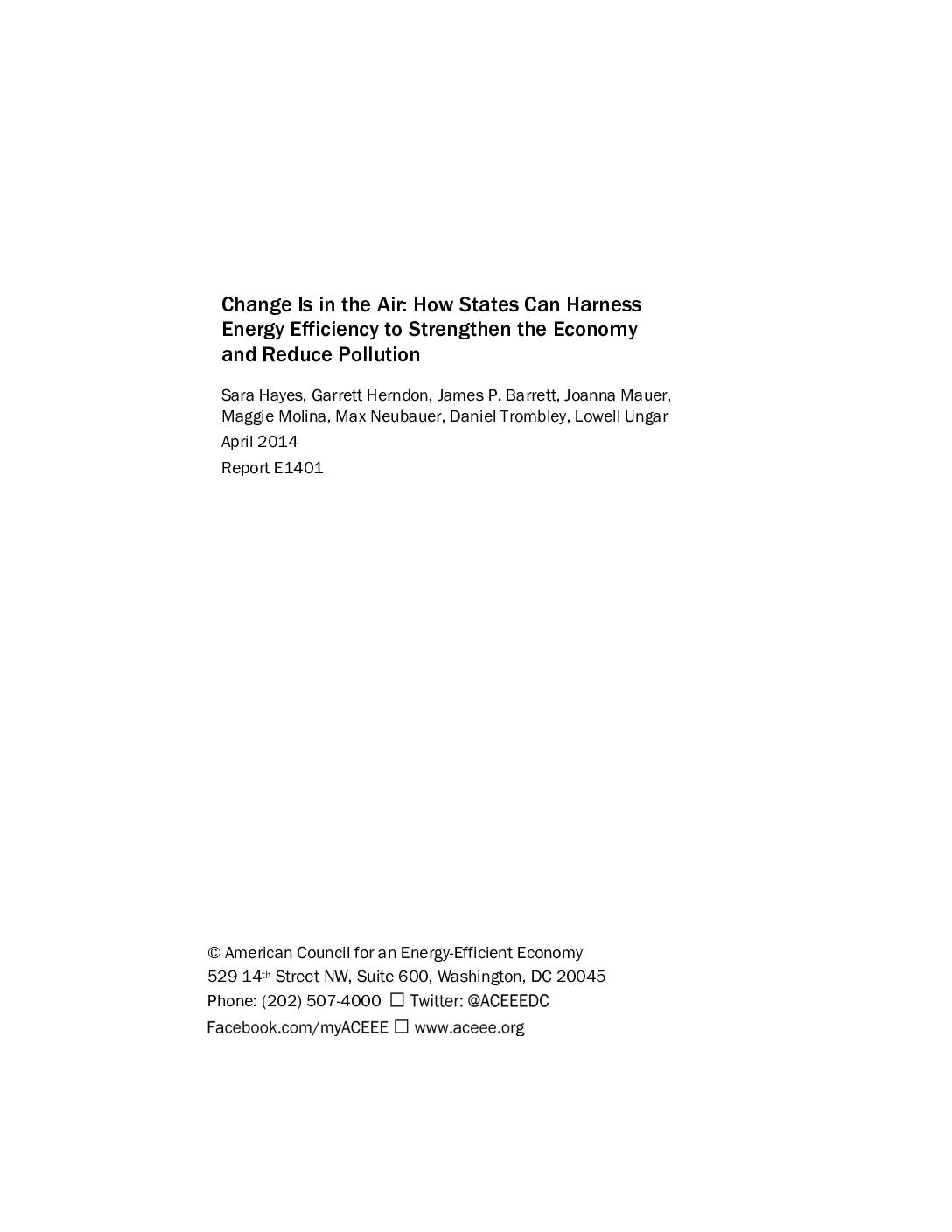This study evaluates the implications of using end-use energy efficiency to reduce greenhouse gas emissions from the power sector. It does so by quantifying the energy, economic, and pollution-reduction impacts of selected energy-saving policies on a state-by-state basis. We evaluate four of the most common and effective energy efficiency policy options available to a state:
Implement an energy efficiency savings target
Enact national model building codes
Construct combined heat and power systems
Adopt efficiency standards for products/equipment
The results of this study show that an emissions standard for existing power plants set at 26% below 2012 levels can be achieved at no net cost to the economy. This standard will create 611,000 new jobs, and it will have a positive economic impact on the country. If enacted, the energy efficiency policies in our study can significantly reduce greenhouse gases while states maintain the flexibility to make use of all of their energy resources. The policies and technologies included in our analysis have already been tested and are deployable now. The benefits can be quantified. There is no need to delay.
Share this

Sectors: Buildings, Cross cutting, Equipment and appliances, Industry, Power sector, Renewables
Country / Region: Northern America, United States
Tags: emissions, energy, energy efficiency, greenhouse gas emissions, impacts on systems and sectors, pollutionKnowledge Object: Publication / Report
Published by: ACEEE
Publishing year: 2014
Author: Sara Hayes, Garrett Herndon, James P. Barrett, Joanna Mauer, Maggie Molina, Max Neubauer, Daniel Trombley, Lowell Ungar
